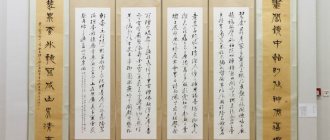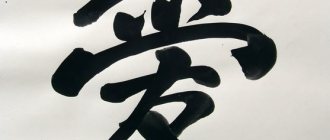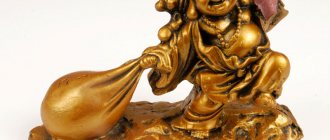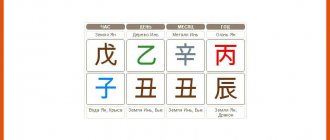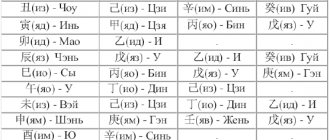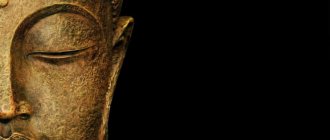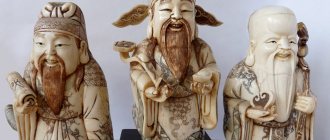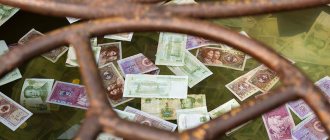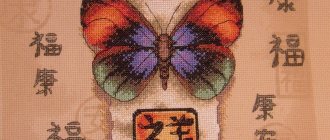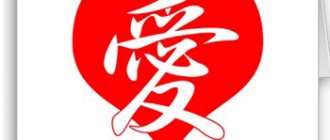Fu dogs are a fairly common talisman in the East, whose history goes back to ancient times, when they were the patrons and protectors of emperors. At that time, they were called the Heavenly Lions of the Buddha and resorting to their help and protection was allowed only by the rulers of the Celestial Empire, and only after some time - by the upper classes. Their location in front of the house testified to the high social status of its owners and their material well-being. They could also be found in front of government offices, temples and palaces.
And only a long time later, this talisman and the opportunity to use its protective properties became available to ordinary people. Currently, it is also popular, considered one of the most powerful protective talismans, which, on occasion, is used and placed outside the house to protect against evil forces and various negative influences, including if there are sources of negative Sha energy nearby. And inside the house - to protect yourself from various troubles and misfortunes, and even from theft while you are away from home, for example, due to departure, and from bankruptcy - in the office.
Outwardly, Fu Dogs look more like lions with the head of a dog, or rather, they only have protruding ears from a dog. They are always depicted in pairs and are a single indivisible whole, which is very important to remember if something happens to one of the figures - then the entire talisman must be replaced. Under no circumstances should one of the couple’s dogs be left behind and the other one replaced; both must retire and be replaced with a new mascot.
This is explained by the fact that they represent the unity of Yin and Yang energies, that is, in the pair there is a female Fu - the feminine principle, the embodiment of Yin energy, whose purpose is to preserve the family hearth, the health and integrity of the family and its offspring. And the Fu male is the masculine principle, the embodiment of Yang energy, and his task is to strengthen the power, position and status of the owner of the house, grant success in business and strengthen family well-being. They differ in that the male dog Fu presses a ball symbolizing our Earth with his left paw, and the female presses the cub to the ground with her right paw.
The Fu Dogs are placed facing the entrance, observing the following rule: if you look from the outside at the entrance, the male should be located on the right, and the female on the left. They can be placed both inside and outside the house. If outside, large statues of this talisman are usually used, made of concrete, stone or metal. And given that they are depicted in different guises, sometimes quite frightening, it is recommended to use their menacing images for placement outside. But for placement inside a house or other premises, choose friendlier and smaller ones, in the form of ordinary figurines. The material is also not of fundamental importance. To protect against robbery during the absence of the owners, they are placed near the entrance, facing the door.
In fact, it does not matter in principle where exactly the Fu Dogs will be located - in any zone or room they will reflect negative energy, provide protection from dark forces and bad people, and strengthen positive energies - the main thing is that their gaze is directed towards the exit. The only thing is that it is not recommended to place them in the bedroom, so as not to disturb the calm flow of Qi and the harmony of sleep with active protective flows. After all, no matter what means and talismans we turn to for help, the main thing is to remember the basic principle of Feng Shui - maintaining balance and harmony.
These famous oriental paired statues and figurines protect against different types of bad luck. Few Chinese homes do not have at least one pair of fu dogs (or “Buddha dogs”). People sometimes confuse Fu dogs, Qilin dogs, and Chinese lions. All are excellent protective symbols, but lions may be too strong for private residences. Instead, place figures of qilin (horses with dragon heads), or, even better, fu dogs.
The meaning of the talisman
A symbol of courage, bravery, selflessness and justice. Dogs represent the protection of home, family, and the stability of family relationships. These wonderful creatures will protect you from robbers and scammers, as well as drive away beggars and dangerous people.
Kind of fu dogs
There are no strict rules regarding the size of the dogs, but it must correspond to the size of the protected house. Any color of the talisman will do, however, it is better to choose the color according to the element of the compass sector where you intend to install them. The controlling (“destroying”) element is preferable. For example, if the gate is in the east, a pair of metal dogs will be effective, since Metal rules Wood, the element of the east.
Doggy area
Dogs placed in the Wealth Zone - South-East will symbolically protect each family member from troubles and failures, as well as protect the well-being and prosperity of the entire family. It is not recommended to place dogs in the bedroom. Fu dogs can be placed near a window if buildings or structures that have an adverse effect are visible from it (chimneys, highways, building spiers, a large lonely tree, a lamppost, etc.). In this case, the figurines you choose will serve the well-being of the family and the stability of relationships, as well as protect each family member from troubles and failures. If there is a place in the room with destructive energy, then you can also place fu dogs there - this will weaken the negative impact.
How to position the dogs fu
They place the dogs opposite the front door, or on both sides of the gate (entrance door). If the fu dogs are located outside the house, then their gaze should be directed from one statue to another, but if the fu dogs are located inside the house, then their gaze should be directed towards the exit from the house. The dogs will greet those entering and serve to protect the well-being of the family. They cannot be installed at ground level: be sure to make tables or plinths for them. The male, leaning on the ball, is placed to the right of the door (as seen from the inside), and the female, holding the cub, is placed to the left. If you live in an apartment building, place the figures in front of the door to your apartment.
Number of dogs
Fu dogs are good in pairs, as they combine the harmony of Yin and Yang energies.
Fu dogs, like other paired talismans, if one figurine is broken or lost, can only be replaced in pairs, and not one at a time. But unlike many paired symbols, celestial lions should under no circumstances be located in the bedroom.
Fu dogs
These dogs are also called Buddha's heavenly lions, which is generally justified. The fact that since ancient times they have been the protectors and patrons of kings makes them real lions. The Imperial Palace, located in Illegal City, has 6 pairs of these animals. Reign considered them an excellent protective talisman, which is why Fu dogs were so popular.
After the imperial palaces, wealthy people began to use talismans. The images decorated rich houses, making them a symbol of public and material status and prosperity. At the moment, Fu dogs are one of the most powerful protective talismans in Feng Shui. If placed outside, they protect the house from negative influences, negative energy and simply evil people. In this case, when the talisman is located inside, it symbolizes protection in a general sense.
The Ancient Legend of the Foo Dogs
In 208 BC. Representatives of the Han Dynasty were the first to use figurines to protect their palace. The story goes that the dog's paws are filled with milk, and they love to frolic with balls that were specially placed around the perimeter of the room and outside it (in the forest, in the yard, outbuildings). This made it possible to attract the attention of animals and call them for protection. Seeing the ball, the dog will begin to play with it, leaving milk on the product, which brings happiness.
According to Feng Shui, the dog was originally installed in the imperial palace; 6 pairs of figurines were used for this. Then talismans appeared in the homes of wealthy people, which symbolized material wealth.
Buddha Lions
In Chinese culture, the stone dog has great significance. In ancient China, lions were not bred, so such animals were unusual for this area; they were specially brought to the imperial court in the form of gifts.
The emperors were captivated by the strength of animals, their endurance, power and beauty, which became the reason that they became sacred in Buddhism. Following the example of the monarchs, the animals began to be called the Heavenly Lions of the Buddha. Over time, since the lion was not associated with China, these animals were replaced by dogs, and their name was replaced by Fu, resulting in the Fu dog, which looks like a lion.
Buddha Lions
Foo Dogs
It is interesting that the lion is an unusual animal for China, because previously they were not found there, but were brought as gifts to the emperors. Perhaps their strength, beauty, power became the prerequisite for the fact that they were made sacred animals in Buddhism. There is also a worldview that after this teaching came from India to China, the Buddha himself was called Fo, and his guards were called Heavenly Lions or Fo Dogs. Later, over time, Fo became Fu, and the lions “transformed” and began to be called Fu dogs (after all, a lion for China, as already mentioned, is atypical, but with dogs the situation is much better). In general, if you look closely, the dog Fu has a lot in common with the king of animals. In fact, in a number of different cases, only protruding ears can serve as a distinctive feature, but otherwise Fu dogs are ordinary lions.
What does this talisman mean?
The Fu dog symbolizes good luck, prosperity, and happiness. The figurine protects against negative energy; it is placed at home, on the street, in the car, in the workplace. It is recommended to use a pair - a male and a female, which personifies the feminine and masculine principles.
We have selected interesting articles for you:
Yin and Yang: meaning, translation, hidden meaning, history of appearance
19.12.2021
What is the secret of God's many-armed nature?
21.12.2021
The male holds his paw on the ball. In ancient China it was a simple ball, today it is associated with the planet Earth. The talisman represents the supreme guardian, the father, who controls external circumstances, protecting the earth from evil forces. The figure is responsible for luck in business and power.
The female acts as the standard of femininity; she is depicted with a cub. The figurine is responsible for protecting the home, family, children and childbirth, home comfort and hearth.
In tandem, Fu dogs complement each other, protect the external and internal world, and act as one. If one of the figurines suddenly gets damaged, then both figurines need to be replaced.
Where to place the figurine in the house
The Fu dog is placed both indoors and outside the house, for example, near the entrance doors, gates, and in the yard. This will help protect against negative influences, bad energy; people with bad thoughts will not be able to enter the house.
By installing a talisman in the middle of the room, you will attract good luck and protect the house from robbery, evil intentions, and damage. To do this, the figure’s muzzle should be directed towards the exit. The placement of dogs in certain areas determines the protection of positive energies in your life. By placing them in the wealth zone, you will attract wealth and well-being; in the work zone, you will attract energy, incentive, and protection from bankruptcy.
During installation, follow a number of rules:
- figurines should always stand in pairs;
- the male is positioned to the right of the front door (when viewed from the outside), as he presses the ball with his left paw;
- the female is placed on the left, as she presses the puppy with her left paw;
- for outdoor installation, metal (if the entrance is located on the south side), concrete figurines are chosen, for indoor use - from glass, porcelain;
- from the outside, the talismans should face each other, from the inside towards the exit;
- if there is a large tree in the yard, then the figurine is placed on the windowsill.
Dogs have a positive effect on people of the water element, those born in the year of the Boar and Rat. At the same time, it is forbidden to place figurines in the recreation area (bedroom, children's room), because the energy, the power of the talismans will disturb your peace.
The meaning of Japanese tattoos
Samurai
A samurai is a Japanese knight. We assume that in this image people want to convey their character or desire to be the same: strong, loyal, decent, to serve the fatherland (the word “samurai” comes from the Japanese “to serve”).
Mangu Samurai Mask
A stunningly beautiful artifact. We are simply delighted with the creativity with which the Japanese make these masks.
Surely, when stuffing it, people attach a certain meaning, like “I am a warrior, be afraid” or “I love Japanese culture,” but it seems to us that this is just decoration.
Japanese carp
Carp, like many other things, was brought to Japan from China in the Middle Ages AD. It has become such a popular fish that its cultivation has become a hobby. The peasants, and then the nobility, crossed their fish, and the colors turned out to be truly amazing. There are now clubs, exhibitions and shows for koi carp lovers all over the world.
The Japanese also like carp because the word “koi” means love.
In Japan, there is a beautiful tradition of hanging a picture of a carp climbing up a waterfall. Such pictures are believed to bring good luck.
Japanese carp are stubborn fish that overcome rapid waterfalls during the spawning season. In Japanese culture, it symbolizes perseverance, victory over oneself and obstacles. According to legend, a carp that overcomes a waterfall turns into a dragon.
The Japanese yakuza even have a special tattoo of “kintaro” - a mythical strongman fighting a huge carp. It means strength, courage and fearlessness.
Japanese dragon
The dragon is a symbol of strength, magic, nobility and power. In Japan and China, imperial and wedding clothing is traditionally decorated with dragons.
DRAGON (Ryu)
Unlike Western dragons, fire-breathing, fear-inspiring creatures, Eastern dragons symbolize something completely different. The dragon in the Japanese tattoo is the embodiment of strength, wisdom and the influence of the universe on people.
The appearance of the Eastern Dragon often combines the images and character of those animals and creatures that he encountered in life.
For example, a dragon might have the eyes of a demon, the belly of a snake, and the claws of an eagle. Often the Dragon is depicted holding a luminous ball or pearl in one of its paws. This item, known as the "closed lotus" symbolizes the essence of the universe, as a kind of control over the natural elements that the Dragon can control. Sometimes the eastern Dragon can be a cunning and dangerous beast, but most often the image of a dragon in a Japanese tattoo is a combination of wisdom and benevolence.
CARP (Koi)
Koi carp is more than just a beautiful fish for the Japanese. He is one of the most popular images of myths and tales of the East, which indicate his symbolic meaning and high status. According to one of the legends, a Koi who can climb the waterfall in a place called the “Dragon Gate” will turn into a Dragon. That is why Carp has become a symbol of aspiration and advancement.
Although the Koi image is considered to be Chinese in origin, it is now widely used in Japan precisely because of its masculine qualities. In the East they say: in order to climb up a waterfall one must be very brave, and if he is caught, then a knife awaits him, just as a sword awaits a warrior. In the Japanese tattoo, Carp, combined with water, is an image of courage, aspiration, the ability to achieve goals and accept life's challenges.
TIGER (Torah)
In China, the Tiger is considered the king of the animal world and signifies strength, courage and longevity, and in women's tattoos it can be an image of cunning and femininity. The Tiger is also a symbol of protection from demons. In many ancient engravings you can see the Tiger fighting with demons. In Eastern mythology, the Tiger is one of the four sacred animals. It symbolizes the North and control of the winds, and represents Autumn in the seasons.
DOG FU (Lion Buddha)
The Eastern Fu Dog, also known as the Lion of Buddha (which is more accurate, since it is still more of a lion than a dog), is very widely used in the art of sculpture and, of course, tattooing. In Shintoism (the religion of Japan), the Fu Dog brings health and wealth and protects against evil spirits. Fu Dog sculptures are usually placed at the temple entrance or and are often found in pairs - one representing heaven and Buddhist law, and the other symbolizing the earth. In Japanese tattoos, the Fu Dog is often depicted crawling along a person’s arm or leg, as if protecting its owner from evil and representing intelligence and a desire for heroism.
PHOENIX (Ho-No)
It is the Phoenix, thanks to its ability to be reborn from the ashes, that is the most important mythological bird among many peoples. For example, in Ancient Rome, the image of the Phoenix was placed on coins and it symbolized the endurance of the empire. And in China, the Phoenix combined yin and yang and began to be used as a symbol of marriage and the birth of a new life. In a tattoo, the Phoenix is depicted at different periods of its life and therefore the background of the tattoo does not necessarily have to be fire. But regardless of this, a Phoenix tattoo will always represent new life, rebirth and immortality of the soul.
SNAKE (Hebi)
At all times and among almost all peoples of the world, various magical and supernatural abilities have been attributed to Snakes. The East was no exception to this. It is believed that depending on the image, the Snake can protect against diseases, natural disasters and can bring good luck and prosperity. But sometimes it also symbolizes jealous women.
In some folklore tales of the East, Snakes guarded treasures and shrines; people believed that snake saliva could create precious stones underground. And the Snake found in the house was a symbol of good luck and the embodiment of the spirits of ancestors, thereby protecting the home. In a tattoo, the Snake can represent not only wisdom and prophecy, strength and protection, speed and determination, but also resentment, revenge and jealousy.
DEMON Oni (They)
One of the popular images in Japanese tattoos is the Oni Demon. These ghostly, fearsome creatures are variously described in Eastern mythology and most often represent the guardians of hell and hunters of sinners.
In older tales, there are also good Demon defenders, such as monks who, after death, became Oni to protect the temple.
In tattoos, Oni Demons are almost always depicted with horns, and their faces are often mask-like and usually red or blue-gray in color.
SCULL
In fact, the meaning of the image of a skull in a tattoo is deeper than is commonly believed. Most people do not think about the true meaning of the skull and only associate it with a negative point of view.
But the skull is not just danger, fear or death. Initially, the skull symbolized the “great change.” Among different peoples, in burial places you can see the image of one or several skulls.
In ancient society, the skull meant the celebration of death, that is, the transition to a “new life”, showing respect for those who had gone through the greatest change and entered a new period of existence.
Hannya MASK
The hannya mask is one of many masks used in traditional Japanese Noh theater, which has been famous for its performances since around the 14th century AD. And masks were used by actors to convey the personality and characters of various characters in Japanese fairy tales.
The hannya mask represents an angry, jealous and vengeful woman who has turned into a demon out of envy and anger. Horns, fangs and sparkling eyes express resentment, hatred and suffering, and scattered hair symbolizes strong emotions.
In a tattoo, the hannya mask is sometimes complemented by masks of other characters, but it can also be a separate piece. Traditionally, the hannya mask is made in red, and the brighter and more aggressive the color used, the stronger the emotions expressed in the tattoo.
Namakubi (severed head)
A typical subject of a Japanese tattoo is Namakubi, a severed or pierced head with a sword with an evil expression on its face. Namakubi can symbolize courage, respect for the enemy, and the willingness to accept one's fate with honor. Can be used as an element of the circle of life or to show others the punishment for living unrighteously.
PION (Botsan)
Peony is undoubtedly considered the king of flowers. And thanks to the large number of petals that elegantly curl around the edges, Peony is also called “a rose without thorns.”
Several plants and flowers are used in Japanese tattooing, and among them Peony takes its rightful and honorable place.
Peony is considered a symbol of wealth, prosperity and good luck. Traditionally, Peony is performed in red, but today other colors are used, such as blue and purple.
Japanese MAPLE (Momiji)
One of the most popular subjects for the background in an Oriental tattoo is the Japanese Maple - a symbol of wind and time.
Maple leaves also represent rebirth, their changes throughout the year - a vivid reminder of the cycle of life and death of all living things.
Often in Japanese tattoo designs, maple leaves are depicted floating in water or flying in gusts of wind.
CHRYSANTHEMUM (Kiku)
The Japanese consider the Chrysanthemum to be the “sun flower” of the imperial family. This flower with petals similar to the rays of the sun is a symbol of perfection, longevity and joy, as well as an attribute of a worthy ruler.
Japan has a national festival of happiness called “Chrysanthemum Day”.
In China, Chrysanthemum is considered a mediator between heaven and earth, that is, between life and death.
Chrysanthemum is identified with autumn, anticipation and contemplation. It is a flower of prosperity, tranquility and a long and full life.
SAKURA
In Japan, Sakura, with its beautiful bloom and rapid decline, symbolizes life itself. The fragility of this cherry represents the fragility and transience of our existence.
Sakura can be the image of ideal death for a warrior or innocence and beauty for a girl.
The Sakura cherry tree is held in high esteem in Japan, with thousands of people gathering to watch the Sakura blossoms. This holiday is called “Hanami” and is a national event and a welcome to spring.
In tattooing, Sakura is often used with other images that can overwhelm the beauty and sophistication of this flower. However, when used correctly, Sakura flower or flying petals can be a good background for Oriental style tattoos.
LOTUS (Hasu)
Amazingly beautiful Lotus flowers have become a symbol of the awakening of the meaning of life in many Eastern religions, especially in India.
And in a tattoo, the Lotus represents mainly religious symbolism, life and its development in general.
Lotus flowers are very popular among Japanese tattoo artists and it is often the Lotus that complements the image of the Koi Carp.
Japanese lettering in tattoos
Be very careful with hieroglyphs. They are beautiful and look great on the body, but don’t get yourself something stupid.
Find out the meaning of the hieroglyph from an expert and double check. Or better yet, three times. So as not to type something like “I have ugly ears” instead of “praise the sun and the sky.”
How to activate the dog mascot
After bringing the protective talisman into your home, clean it with water and salt. To activate the Fu dogs, place the figures in the center of the table and place 12 candles around them. While the candles are burning, an invisible ball will cover the house like a protective cylinder.
According to Feng Shui, the dog is activated by words such as: “I am under the protection of the Universe, my finances are safe and sound, I always make profitable purchases, my expenses always pay off.”
After this, you need to place the talisman in one of the zones.
Places of application
Drawings are carefully worked out before application. The master takes into account the location and anatomical features of the body so that the image when walking becomes alive and impressive. You can often find sketches of a lion dog crawling along a person’s arm or leg.
Sufficient space is required for high-quality application and creation of the desired impression. For men, the forearm, back, and chest are popular. Girls put tattoos on their lower back.
To guarantee a good result, you should contact professional craftsmen. The Art of Pain studio employs tattooists with artistic education who create unique tattoo designs depicting a Japanese lion . The craftsmen take into account wishes and the location of the drawing. Thanks to spectacular color shades, bright, eye-catching compositions from intertwining parts of the animal are created on the body. The right combination of colors gives the image a special sound.
Mascot material
The figurines are made of natural eye-shaped quartz. This stone, being in itself one of the most powerful amulets, significantly enhances the protective properties of the talisman. These figures can also be used as original amulets pendants. That's what the Chinese do.
The size and material from which Foo dogs are made matter. If they are installed on the street for external security of the house, then it is better to make them large from concrete, stone or metal.
Let the appearance be formidable or even intimidating. Let the dogs indoors be small in size and more good-natured in appearance. It is better to make them from pleasant materials - glass, porcelain or ceramics.
Stone Dogs Fu
In general, indoors they should be placed so that they look towards the street (either at the front door or out the window).
It is believed that this is how dogs repel external negativity, which could somehow harm your home.
In the office, this talisman is used to protect against bankruptcy.
If you place the dogs in the wealth zone, this will be excellent protection against losses.
When placed in the family zone, you will strengthen family relationships and protect the family from disintegration.
Wooden dog Fu
In a word, Fu Feng Shui Dogs are a universal talisman of good luck and protection that can be used anywhere, depending on what you want. You can even install it in a car, and it will protect its owner on the road, giving him good luck and safety.
The only prohibited place for placing Fu Dogs is the bedroom or any other place for rest and relaxation. A strong opposition of colliding energies will interfere with proper rest.
The talisman must be positioned in the following way in order for it to “work” correctly. The male is on the right, the female is on the left, if you look at the entrance from the outside. It is possible for them to look at each other.
Source: vash-fenshyu.ru
